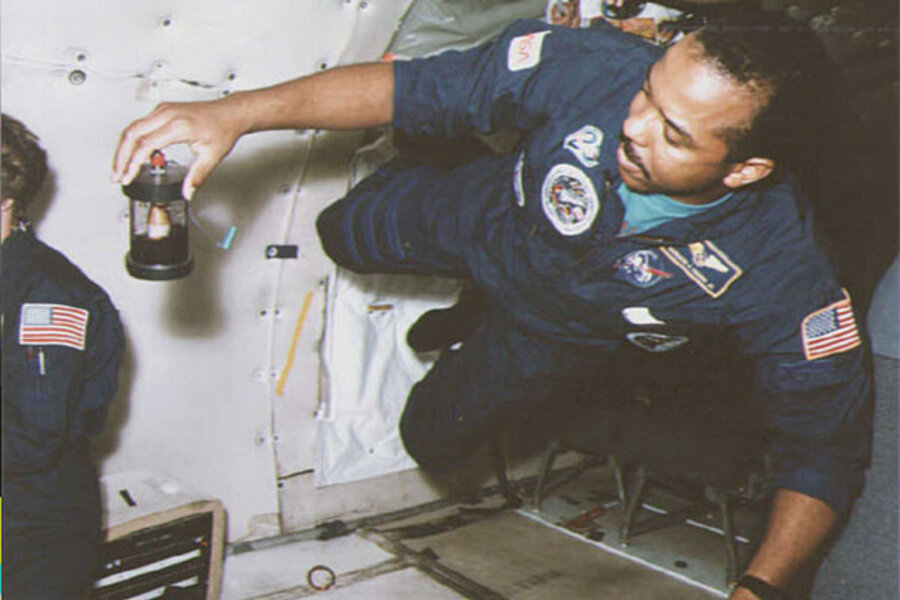The 9 weirdest things ever flown on the Space Shuttle (original) (raw)
When NASA's space shuttles launch into orbit, they don't just carry astronauts and supplies into the final frontier. There's a lot of other weird stuff that makes the out-of-this-world journey, too.
NASA's last space shuttle mission will launch Friday, July 8 on the Atlantis orbiter to deliver spare parts to the International Space Station. The mission will be the 135th and last flight for the program, which began in 1981.
But over the course of 30 years, the space shuttles have flown some peculiar objects into orbit. The list of odd stuff that flew aboard the shuttles is a long one, and includes the Olympic torch, a replica of the golden spike from the First Transcontinental Railroad, and rocks from the top of Mount Everest and the surface of the moon, just to name a few.
Here nine recent space oddities carried into orbit on NASA shuttles:
1. Cans of Coca-Cola & Pepsi

Mission Specialist Bernard A. Harris holds a sealed cup from the "Coca-Cola Space Dispenser" during a weightless practice in preparation for the Space Shuttle Discovery mission STS-63. The dispenser was used to study taste perception.
July 08, 2011, 2:53 p.m. ET
In 1985, special modified cans of Coca-Cola and Pepsi soda rode aboard the space shuttle Challenger on its STS-51F mission. The trip added more fuel to the so-called "Cola Wars" between the Coca-Cola Company and Pepsi, Co.
"Originally, only Coca-Cola was scheduled to fly," said Robert Pearlman, editor of collectSPACE.com, a website that tracks space-flown artifacts, and a SPACE.com contributor. "In addition to their desire to offer carbonated beverages for astronauts, Coca-Cola was also observing the effects of spaceflight on changes in taste perception with the goal of understanding altered tastes among target populations on Earth, such as the elderly."
"When Pepsico Inc. learned Coca-Cola was aboard, they approached NASA to fly as well, and quickly devised their own shaving cream can-inspired design," said Pearlman.
The cans, which were officially dubbed the Carbonated Beverage Dispenser Evaluation payload, were part of an experiment by the two soft drink giants to test packaging and methods of dispensing the liquids in a microgravity environment.
At the end of Challenger's mission, however, the astronaut crewmembers deemed the experiment a failure due to the lack of refrigeration and insufficient protection from microgravity effects. [Most Memorable Space Shuttle Missions]
Coca-Cola later flew a dispenser specially designed for microgravity to give astronauts the opportunity to enjoy Coke and Diet Coke in space. The dispenser flew during the space shuttle Discovery's STS-63 mission in 1995. The beverages were dispensed into sealed drinking cups and the liquid was chilled on the spot using cooling coils attached to the storage container.
A second-generation dispenser was also flown on Endeavour's STS-77 mission in 1996. This version held Coke, Diet Coke and Powerade, an energy drink. The device, however, did not work as expected on orbit.
- 10 Amazing Space Shuttle Photos
- Retro Space Pictures: Building Shuttle Atlantis
- Vote Now! What's Your Favorite Space Shuttle?
1 of 8